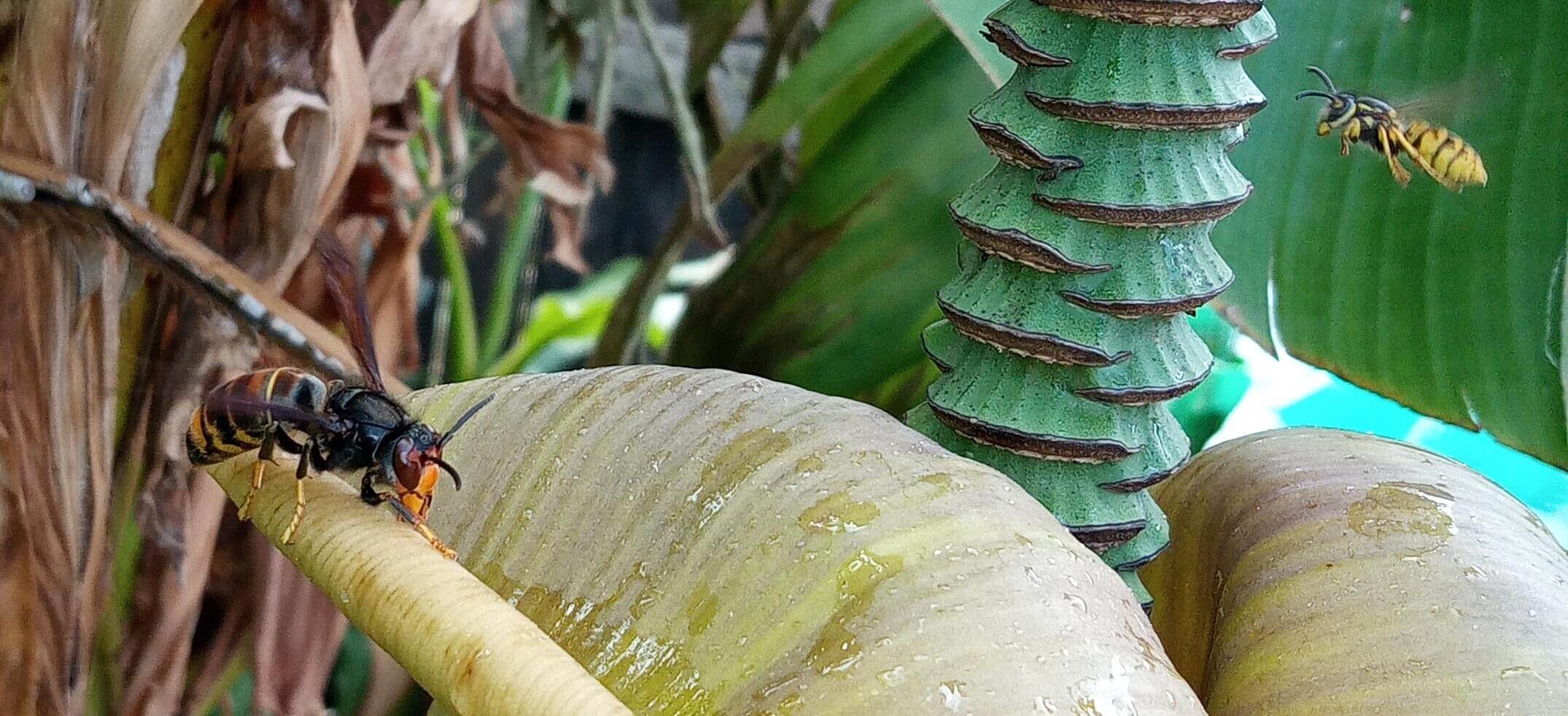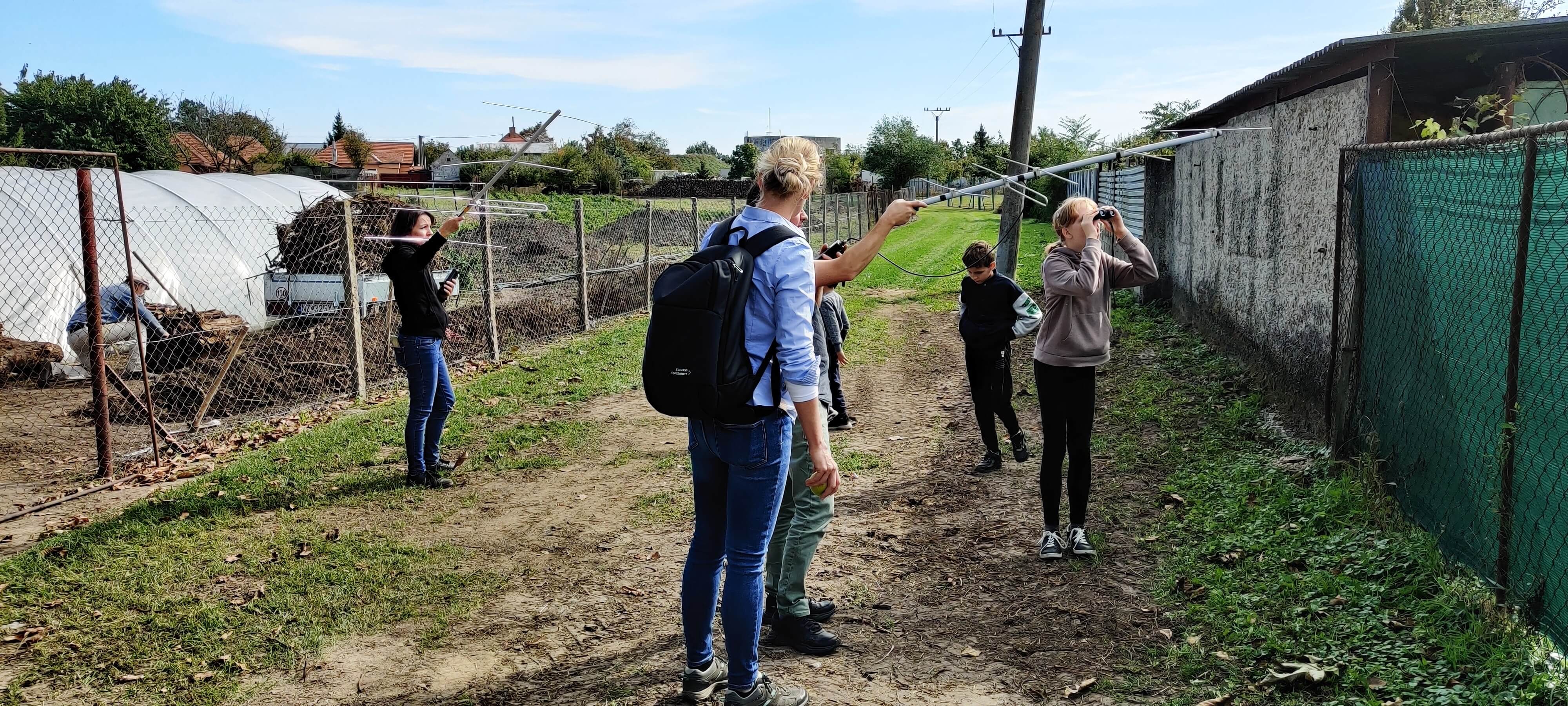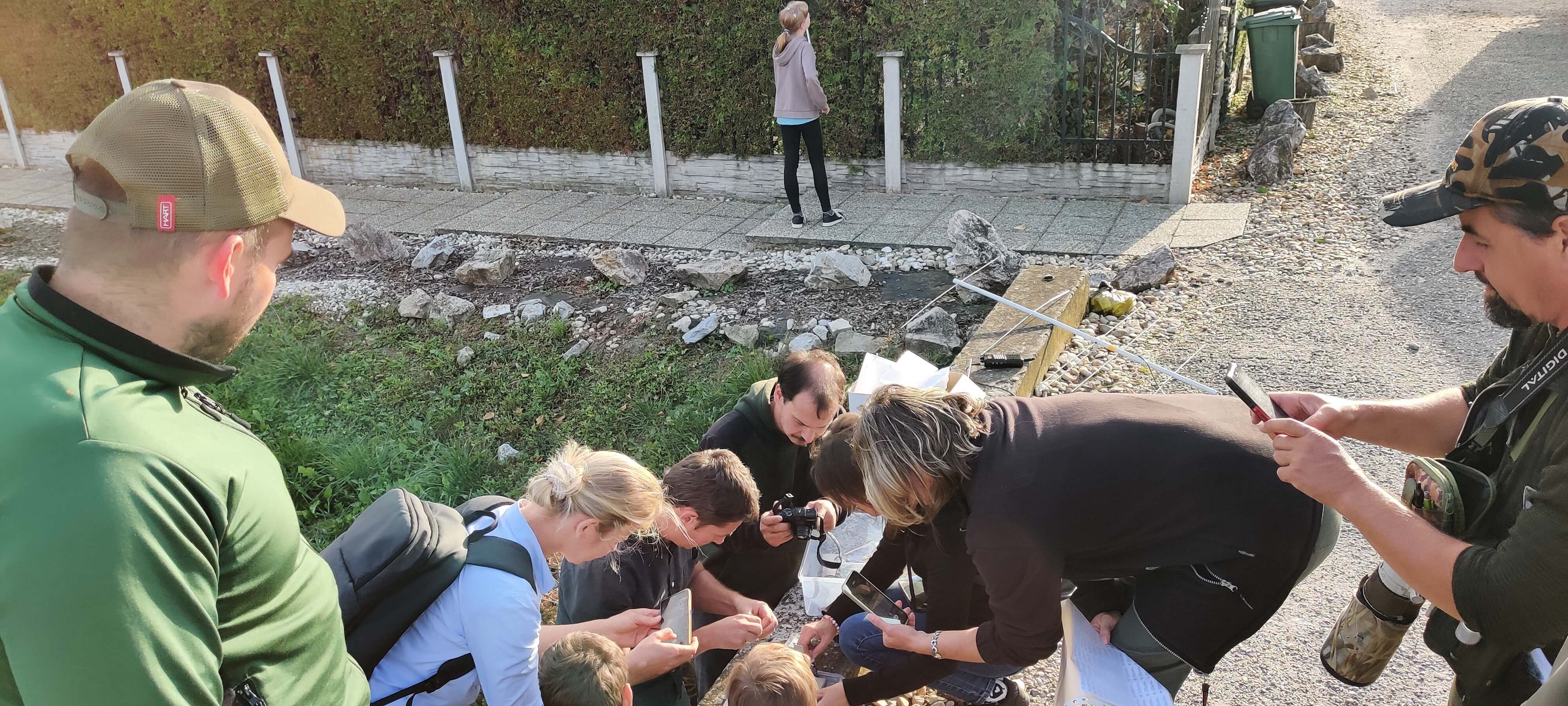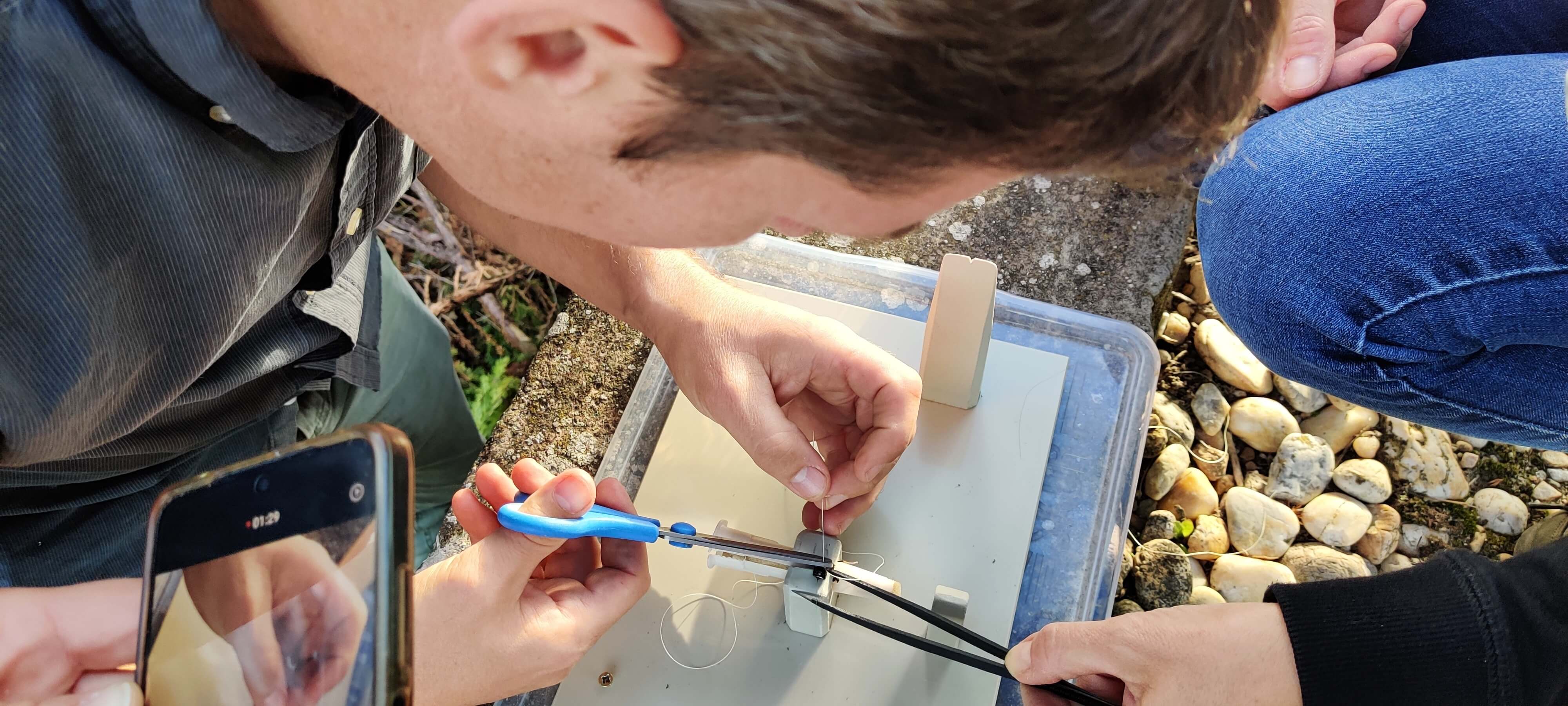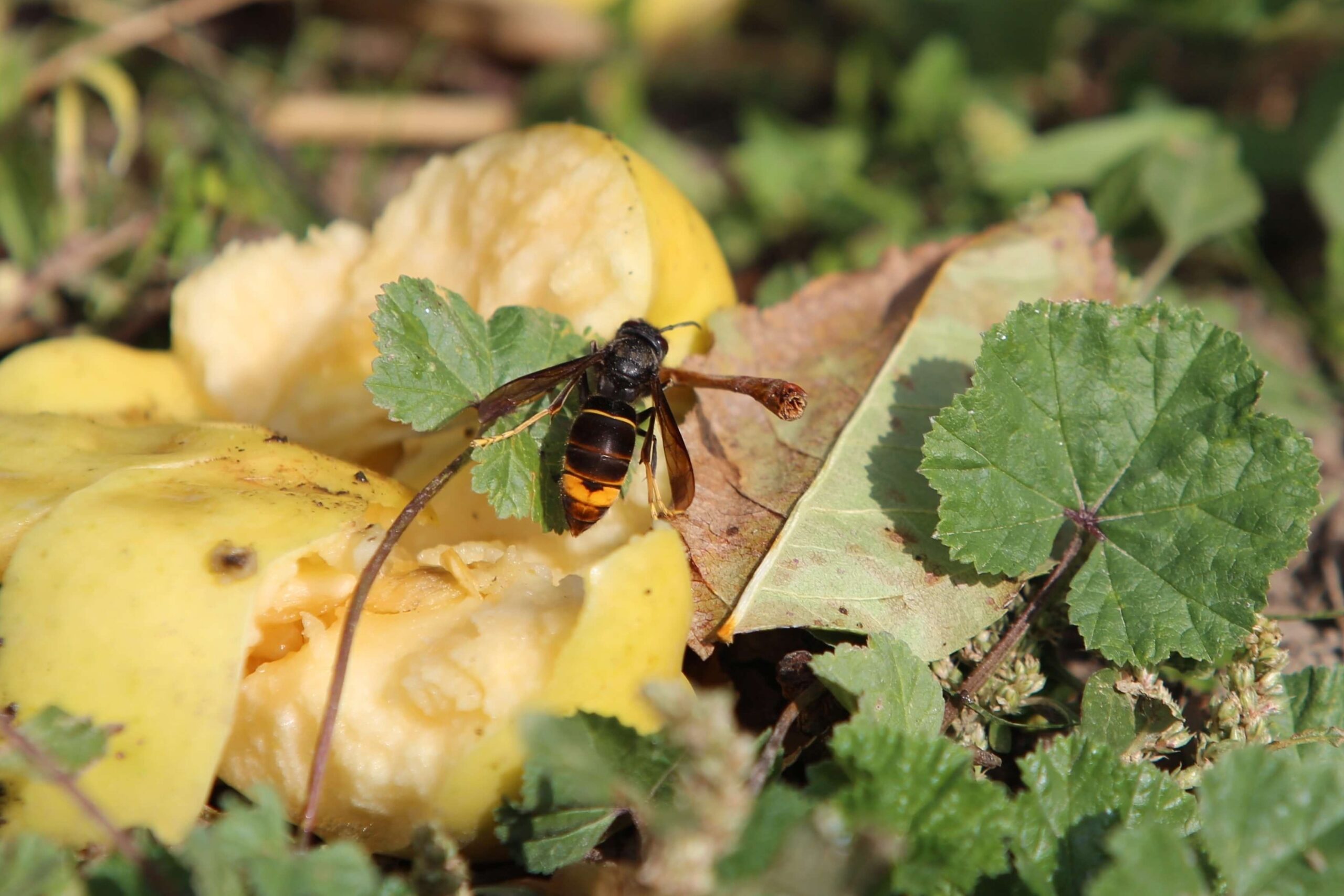
The Asian hornet (Vespa velutina Lepeletier, 1836) originates from Southeast Asia. It was first recorded in Europe in France in 2004. It is possible they were introduced with goods even earlier. From there, they began to spread rapidly. They have now been recorded in Spain, Portugal, Belgium, Italy, Germany, the United Kingdom, the Netherlands, Switzerland, Luxembourg, Ireland, Austria, and the Czech Republic. Their spread poses a serious threat to beekeeping, as they are known to attack hives, which can negatively impact pollination and honey production.

Given the direction of its spread and suitable climatic conditions, it was predicted that the species would eventually reach us.
On September 28, 2024, Plant Science and Biodiversity Centre SAS researchers, Mgr. Katarína Senková Baldaufová and RNDr. Dušan Senko, PhD., discovered several individuals of the Asian hornet in the intravillage area of Palárikovo (Nové Zámky district). In accordance with invasive species legislation, this finding was reported to the Ministry of Environment (MŽP) and the State Nature Conservancy of the Slovak Republic (ŠOP SR). On September 30, 2024, ŠOP SR workers in Banská Bystrica, led by Ing. Ivana Havranová, PhD. (Head of the Zoology Department), in collaboration with Plant Science and Biodiversity Centre staff, confirmed the presence of the hornet and used various methods (e.g., triangulation) to locate the nest.
On October 1, 2024, Dr. Balázs Kolics (Hungarian University of Agriculture and Life Sciences) and Mgr. Helena Proková (Blesabee), who had repeatedly successfully located hornet nests in France, joined the team. VHF radiotelemetry was used to track their movements and identify the nest, which is key in combating invasive species. Tiny transmitters were glued to the hornets, transmitting a VHF signal at a specific frequency. However, the nest has not yet been successfully located.
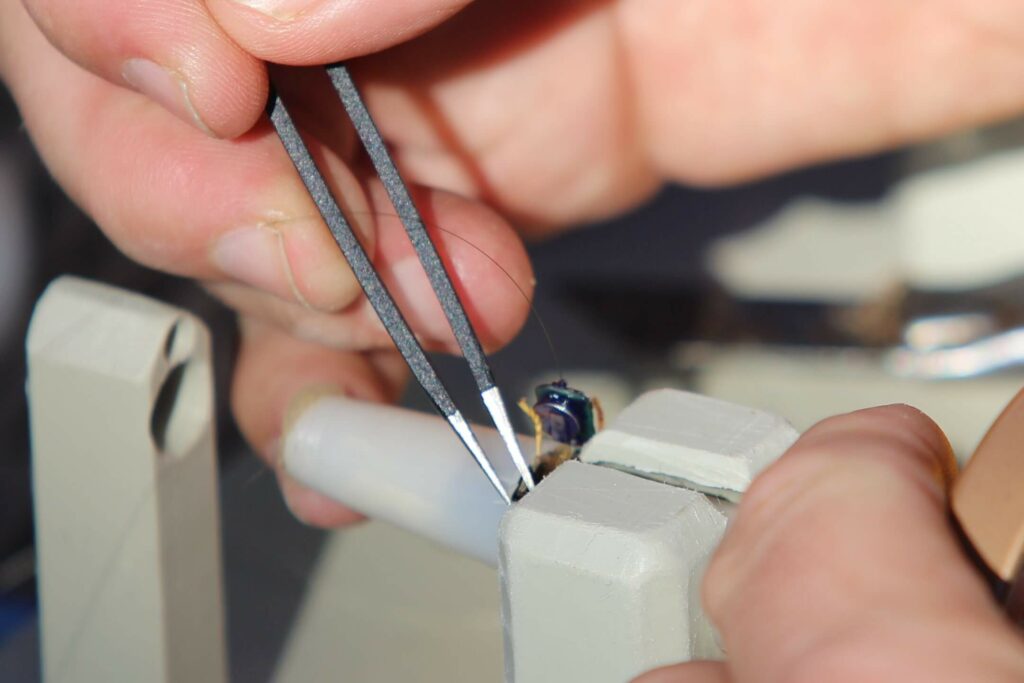
We assume that the individuals in Palárikovo originated from Hungary, where they were confirmed on August 19, 2023, in the village of Kimle in the Győr-Moson-Sopron district (57.53 km as the crow flies from Palárikovo). Two workers were observed in a local apiary and belonged to the subspecies Vespa velutina nigrithorax, which originally spread from France. The discovery in northern Hungary suggested that the species might already be present in Austria and Slovakia, which was later confirmed in both cases.
The average annual air temperature in Central Europe has increased since 2004, when the species was first observed, which likely supports its spread. Longer periods of warm weather, from March to November, provide suitable conditions for the Asian hornet’s survival, while winters are no longer as cold. Lastly, the lack of natural predators in our environment allows it to expand without significant limitations.
Asian hornets pose a serious threat to bees, which make up a significant portion of their diet. Bees exhibit no effective defensive behavior against this exotic predator. This can negatively affect not only ecosystems but also agriculture in Europe.
Is this a consequence of climate change, which significantly impacts the future of biodiversity in our region?
Text: RNDr. Dušan Senko, PhD.
Photos: RNDr. Dušan Senko, PhD., Plant Science and Biodiversity Centre SAS, Mgr. Jozef Lengyel, PhD., zoologist, Dunajské Luhy Protected Landscape Area Administration in Bratislava – Dunajská Streda workplace





